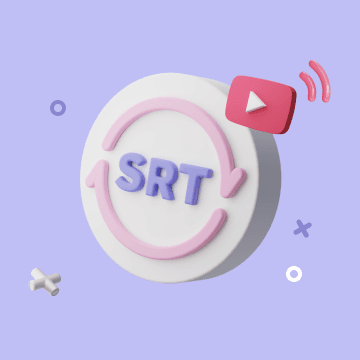
Which AI Content Detector is Right for You? A 2025 Comparison
The Growing Need for an AI Content Detector in 2025
In 2025, the digital landscape is inundated with AI - generated content. From blog posts and academic essays to marketing copy, AI - powered language models like GPT - 4 and its successors have made content creation faster and more accessible than ever. However, this proliferation comes with a host of challenges. Plagiarism, in the form of unacknowledged AI - generated text, has become a significant concern. Authenticity is at stake, as readers and consumers expect content to be the product of human thought and creativity. Ethical issues also arise, especially in fields where human - produced work is highly valued, such as academia and journalism.
An AI content detector is a tool designed to analyze text and determine whether it was written by a human or an AI. These detectors typically use a combination of techniques, including natural language processing (NLP), machine learning algorithms, and statistical analysis. They look for patterns in language use, such as sentence structure, vocabulary choice, and the consistency of writing style, which can indicate whether the text is of human or AI origin.
Accurate AI content detection is crucial for various professions. Educators need to ensure that students' work is their own, as relying on AI - generated essays undermines the learning process and academic integrity. Content creators, such as bloggers and journalists, must maintain the authenticity of their work to build trust with their audiences. Researchers, too, need to be certain that the sources they are citing are human - written and reliable. When considering the options in the market, a comparison like "gptzero vs justdone ai" can help users in different fields make an informed decision about which tool best suits their needs.
:::: key-takeaways ::::
- AI - generated content is becoming increasingly prevalent, posing challenges to authenticity, plagiarism, and ethics.
- AI content detectors use NLP and machine learning to distinguish between human - and AI - written text.
- Different professions, including educators, content creators, and researchers, rely on accurate AI content detection for maintaining integrity.
- Comparing tools like GPTZero and JustDone AI can assist in choosing the most suitable detector for specific needs. ::::
Leading AI Content Detector Tools on the Market
As the demand for AI content detection grows, several tools have emerged to meet this need. Here is a curated list of some of the most prominent AI content detector tools in 2025.
Sapling
Sapling is a well - known tool that focuses not only on AI content detection but also on general writing assistance. It is popular among professional writers, content teams, and students. Sapling's AI content detector uses advanced NLP algorithms to analyze text for signs of AI generation.
Unique Features: It offers real - time feedback as you write, which can be incredibly useful for quickly identifying and rectifying any AI - generated elements. Reported accuracy is high, especially for detecting text generated by common AI models.
Pros: The real - time feedback feature is a major plus, allowing for immediate corrections. It also integrates well with popular writing platforms like Google Docs and Microsoft Word.
Cons: Some users may find the free version limited in its capabilities, and the paid plans can be relatively expensive for individual users.
 Visit Sapling's official website
Visit Sapling's official website
GPTZero
GPTZero is designed specifically for detecting AI - generated text, with a focus on accuracy and simplicity. It is suitable for a wide range of users, from students worried about academic integrity to content reviewers in media organizations.
Unique Features: GPTZero claims to be highly accurate in detecting text generated by GPT - based models. It uses a combination of neural network analysis and statistical language models to make its determinations.
Pros: It has a user - friendly interface, making it easy for non - technical users to operate. The tool provides detailed reports on the likelihood of text being AI - generated, which can be useful for verification purposes.
Cons: Its accuracy may be somewhat limited when it comes to detecting text from less - common or custom - trained AI models. When compared to JustDone AI, GPTZero may be more focused on GPT - derived content, potentially making it less versatile in some cases.
 Visit GPTZero's official website
Visit GPTZero's official website
Winston AI
Winston AI is a comprehensive AI content detection platform that caters to businesses, educational institutions, and content publishers. It offers a suite of features beyond basic detection.
Unique Features: Winston AI can analyze large volumes of text quickly, making it suitable for enterprises dealing with a high - volume of content. It also provides insights into the type of AI model that may have been used to generate the text.
Pros: The ability to handle batch processing is a significant advantage. It also offers API integration, allowing it to be incorporated into existing content management systems.
Cons: The setup and configuration can be complex for smaller teams or individual users. Additionally, the pricing for enterprise - level features may be out of reach for some.
 Visit Winston AI's official website
Visit Winston AI's official website
ZeroGPT
ZeroGPT is a straightforward and easy - to - use AI content detector. It is popular among students, bloggers, and small - business owners who need a quick and simple way to check their content.
Unique Features: ZeroGPT offers a free - to - use version with no limitations on the number of checks. It has a simple interface where users can paste their text and get instant results.
Pros: The free access is a major draw, especially for those on a budget. It is also relatively fast in providing results.
Cons: The accuracy may not be as high as some of the more advanced paid tools. It may also lack some of the detailed reporting features found in other detectors.
 Visit ZeroGPT's official website
Visit ZeroGPT's official website
JustDone AI
JustDone AI is an all - in - one content creation and detection platform. It is aimed at content marketers, agencies, and entrepreneurs who need to manage both the creation and verification of their content.
Unique Features: JustDone AI not only detects AI - generated text but also offers content generation tools with built - in safeguards to prevent over - reliance on AI. It has a more holistic approach to content management.
Pros: The integration of creation and detection features can streamline the content workflow. It also claims to have high accuracy in detecting AI - generated text across different models. When compared to GPTZero, JustDone AI's integrated approach may be more appealing to those who are involved in the entire content creation process.
Cons: The platform may be a bit overwhelming for users who are only interested in basic AI content detection. The pricing for the full suite of features may also be a deterrent for some.
 Visit JustDone's official website
Visit JustDone's official website
Essential Features to Look for in an AI Content Detector
When choosing an AI content detector, several key features should be considered.
Accuracy and False Positives/Negatives: A high - accuracy rate is crucial. False positives (flagging human - written text as AI - generated) and false negatives (failing to detect AI - generated text) can both be problematic. For example, in an academic setting, a false positive could wrongly accuse a student of using AI, while a false negative could allow cheating to go undetected. When comparing GPTZero and JustDone AI, understanding their accuracy rates and false - positive/negative ratios can be a deciding factor.
Ease of Use and User Interface: The tool should be intuitive, especially for non - technical users. A clean and simple interface makes it easier to quickly check content without a steep learning curve.
Pricing Models: Some tools offer free versions, which can be great for occasional use. Others have subscription - based models or charge per word. Consider your usage frequency and budget when choosing a pricing model.
Integration Capabilities: If you work with specific content management systems (CMS) or writing tools, look for a detector that can integrate seamlessly. APIs and browser extensions can enhance the usability of the detector within your existing workflow.
Supported Content Types: Different detectors may be better suited for long - form content, short - form content, or even code. Make sure the tool you choose can handle the type of content you typically work with.
Speed and Batch Processing: For those dealing with large volumes of content, speed and the ability to process multiple texts at once are important. Tools like Winston AI excel in this area, but it's important to evaluate based on your own needs.
Evaluating these features carefully can help you make the right decision, whether you're comparing GPTZero and JustDone AI or other available tools.
Maximizing Content Integrity with Automated Workflows
While standalone AI content detectors are useful, integrating them into automated workflows can significantly enhance their utility. Automation platforms can streamline the content verification process, ensuring that content is checked for AI - generated elements before it is published or submitted.
Automated content scanning before publishing can prevent AI - generated content from reaching the public, maintaining the credibility of your brand or publication. Real - time flagging of suspicious text can alert writers or editors immediately, allowing for prompt action. Integration with content management systems (CMS) or writing tools means that the detection process becomes an inherent part of the content creation workflow.
Bika.ai is a powerful platform that enables users to automate content verification processes. It can be configured to work with various AI content detectors, taking the manual effort out of content checking.

Automating Content Verification: The Bika.ai Project tracker Template for ``
The Project tracker Template on Bika.ai is a valuable resource for project managers, team leads, and anyone involved in project management. Its purpose is to efficiently manage and track project progress in real - time.
💡 Why you should use Project Tracker Template
This template is your ultimate solution for efficient project management. It allows teams to effortlessly manage and track project progress in real - time, ensuring seamless project coordination.
👉 How the template works
The template consists of two databases: "Overview" and "Tasks, timelines, and assignees". In the "Overview" database, project details such as name, status, project lead, working team, kickoff date, due date, budget, and links to tasks, timelines, and assignees can be recorded. The "Tasks, timelines, and assignees" database helps manage individual tasks, including their status, subtasks, assigned members, project leads, kickoff and due dates, and links back to the corresponding projects.
🎯 How to use
- Open the Project Tracker Template.
- In the "Overview" database, fill in the project details.
- For each project, link to the relevant tasks in the "Tasks, timelines, and assignees" database.
- In the "Tasks, timelines, and assignees" database, manage the tasks by setting their status, subtasks, assigned members, and due dates.
👉 Who should use this template
This template is ideal for project managers, team leads, and anyone involved in project management. Whether it's a small team project or a large - scale enterprise initiative, it helps keep everything organized and on track.
⭐ Key Features of This Template
- Real - time tracking of project progress.
- Easy assignment of tasks and responsibilities.
- Clear visualization of project status.
- Seamless integration of project details and task management.
🔧 Frequently Asked Questions
- How do I update the project status?
- In the "Overview" database, select the project and update the "Status" field.
- Can I add more tasks to the "Tasks, timelines, and assignees" database?
- Yes, simply create a new record and fill in the task details.
- How do I link a task to a project?
- In the "Tasks, timelines, and assignees" database, use the "Projects" link field to connect it to the corresponding project in the "Overview" database.
For content - related projects, this means automating tasks related to AI content detection and verification. For example, during project planning, you can set up rules to ensure that all content - related tasks are scanned for AI - generated elements using tools like GPTZero or JustDone AI. Task assignment can include designating who is responsible for reviewing the AI - detection results. Status updates can reflect whether the content has passed or failed the AI - detection check. Team collaboration is enhanced as everyone is aware of the content integrity requirements. Budget tracking can account for any costs associated with using AI content detection tools. Deadline management ensures that content is checked for AI - generation in a timely manner.
This template enhances the value derived from any AI content detector by making the detection process proactive and integrated. It ensures that AI content detection is not an after - thought but an integral part of the project workflow.
Try the Project tracker Template
Conclusion: Secure Your Content's Authenticity
In 2025, choosing the right AI content detector is of utmost importance. Whether you're weighing the options between GPTZero and JustDone AI or considering other tools, a thorough evaluation of features, accuracy, and usability is essential. Maintaining content authenticity is crucial for various professions, and the right detector can help achieve this.
Bika.ai takes the process a step further by enabling users to move beyond manual checks to fully automated content integrity workflows. By integrating AI content detectors into its Project tracker template and other automation features, Bika.ai empowers users to streamline their content creation and verification processes.
We encourage you to explore Bika.ai for automating workflows that support your content creation and verification needs.

FAQ
Q: How do AI content detectors determine if text is AI - generated? A: AI content detectors typically use natural language processing, machine learning algorithms, and statistical analysis. They look for patterns in sentence structure, vocabulary choice, and writing style consistency to distinguish between human - and AI - written text.
Q: Why is it important for educators to use AI content detectors? A: Educators need to ensure students' work is their own. AI - generated essays undermine the learning process and academic integrity. Using AI content detectors helps educators maintain the fairness and authenticity of the educational environment.
Q: How can the Bika.ai Project tracker template enhance the use of AI content detectors?
A: The Project tracker template on Bika.ai can automate tasks related to AI content detection. It can set up rules for scanning content during project planning, assign review tasks, and update project status based on AI - detection results, making the detection process proactive and integrated into the overall project workflow.

Recommend Reading
- Unleash Collective Intelligence: How Agent Swarm & Bika.ai are Revolutionizing AI Automation
- Elevate Your Presentations: Best Presentation Software Alternatives to PowerPoint in 2025
- Choosing the Right AI Content Detector: A 2025 Comparison Guide
- Beyond ChatGPT: Choosing the Right AI Tool for YouTube to Twitter Sharing Automation - Bika.ai Compared
- Outlook vs Gmail: Which Email Platform Reigns Supreme for Your Automated Workflow?
Recommend AI Automation Templates

Coming soon




Coming soon